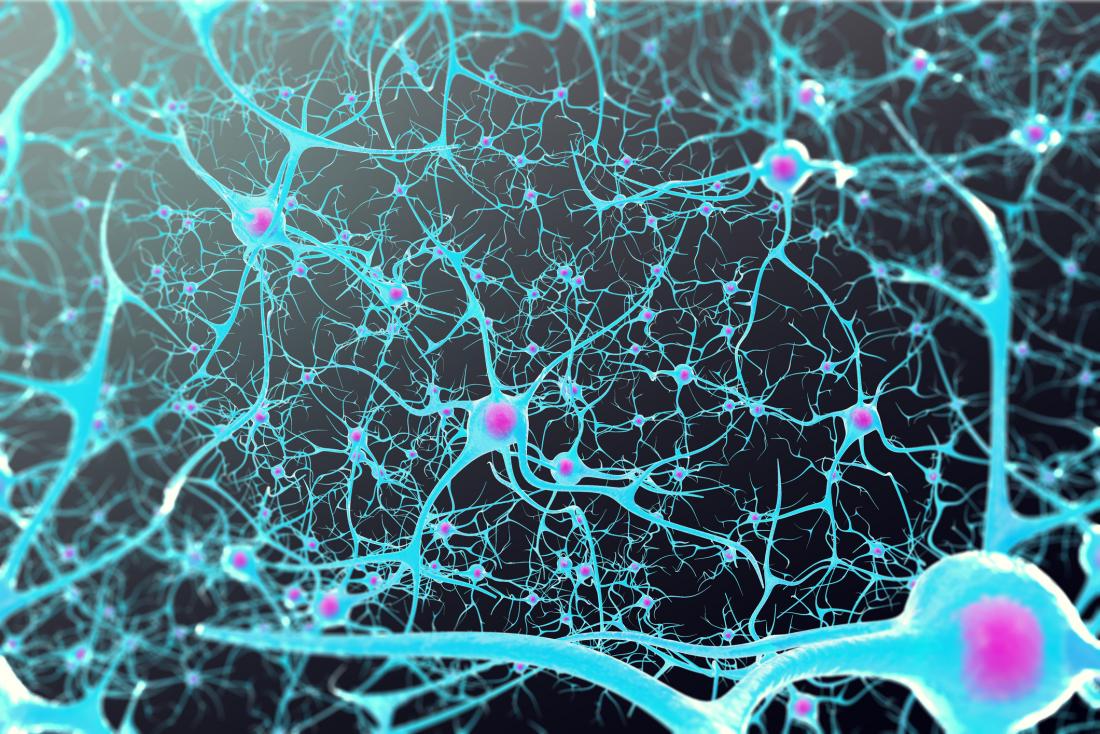
Neuronal activity is lower in people who live longer, according to new research.
In a recent Nature paper, researchers from Harvard Medical School in Boston, MA, report how they found a distinct signature of human longevity in the genes of the brain’s cerebral cortex.
The signature that they found is a pattern of gene expression that “is characterized by downregulation of genes related to neural excitation and synaptic function,” write the authors.
Neural activity is to do with the amount of signaling — in the form of electrical currents and other transmitters — that is going on the brain. Too much neural activity, or excessive excitation, can present in various ways, such as a muscle twitch or a mood change.
For the study, the researchers performed cellular, genetic, and molecular experiments in worms. They also analyzed mice with altered genes and examined brain tissue from people who were more than 100 years old when they died.
These tests revealed not only that altering neural activity can influence life span, but they also gave clues on the molecular processes that might be involved.
“An intriguing aspect of our findings,” says senior study author Bruce A. Yankner, a professor of genetics and neurology at Harvard Medical School, “is that something as transient as the activity state of neural circuits could have such far ranging consequences for physiology and life span.”
Molecular influencers of longevity
Scientists have known for some time that neural activity affects a range of conditions, including epilepsy and dementia. However, while some animal studies have pointed to an effect on aging, it was not clear until now whether this influence might also extend to humans.
Signaling by the hormones insulin and insulin-like growth factor (IGF) are already well-known as molecular influencers of longevity. Scientists also believe that this is the same signaling pathway that caloric restriction works through.
The new findings reveal that neural excitation also influences longevity down this insulin and IGF signaling pathway. The key lies with a transcription factor called REST.
Transcription factors are proteins that switch genes on and off, that is, they control gene expression. In this way, the same sequence of genes can have quite different effects in cells, depending on which ones are on and which are off.
It is largely due to transcription factors and their control of gene expression that the cells of humans and other advanced organisms have such a huge repertoire of genetic reactions to their environment.
In previous work, Prof. Yankner and his team had already shown that REST helps to protect the brain from stressful effects that damage nerve cells, such as those that lead to dementia.
REST suppresses neural activity
In the new study, the researchers found that REST also suppresses neural activity in animal models ranging from worms to mammals. The transcription factor appears to suppress genes that have a central role in neural excitation.
These genes control ion channels, receptors of chemical messengers, and components that make up synapses, which are the structures that allow cells to pass messages to each other.
The investigators ran tests in which they blocked REST — or the equivalent transcript factor — in the various animal models. These tests resulted not only in higher neural activity but also shortened the life span of the animals.
In contrast, boosting levels of REST had the opposite effect — it led to lower neural activity and longer life spans.
Tests of cells from postmortem human brain tissue also revealed that individuals whose life span had exceeded 100 years had significantly higher levels of REST in their nuclei compared with those whose life span had been 20–30 years shorter.
The effect of lower neural activity, in turn, switches on another group of proteins called forkhead transcription factors that influence longevity through the insulin and IGF signaling pathway in many organisms.
Prof. Yankner suggests that there could be genetic and environmental factors behind the variation in neural activity in humans.
He and his team propose that, when added to previous findings about the part that REST plays in brain damaging conditions such as dementia, the new results should spur interest in developing drugs that target the protein.
He cautions, however, that their study did not clarify whether people’s personality, thinking, or behavior, can influence their life span.
“An exciting future area of research will be to determine how these findings relate to such higher-order human brain functions.”
Prof. Bruce A. Yankner
